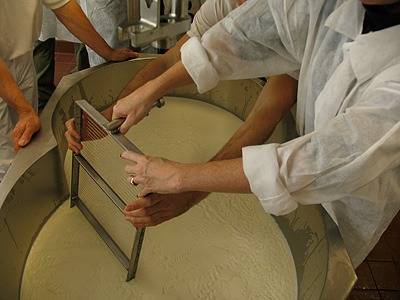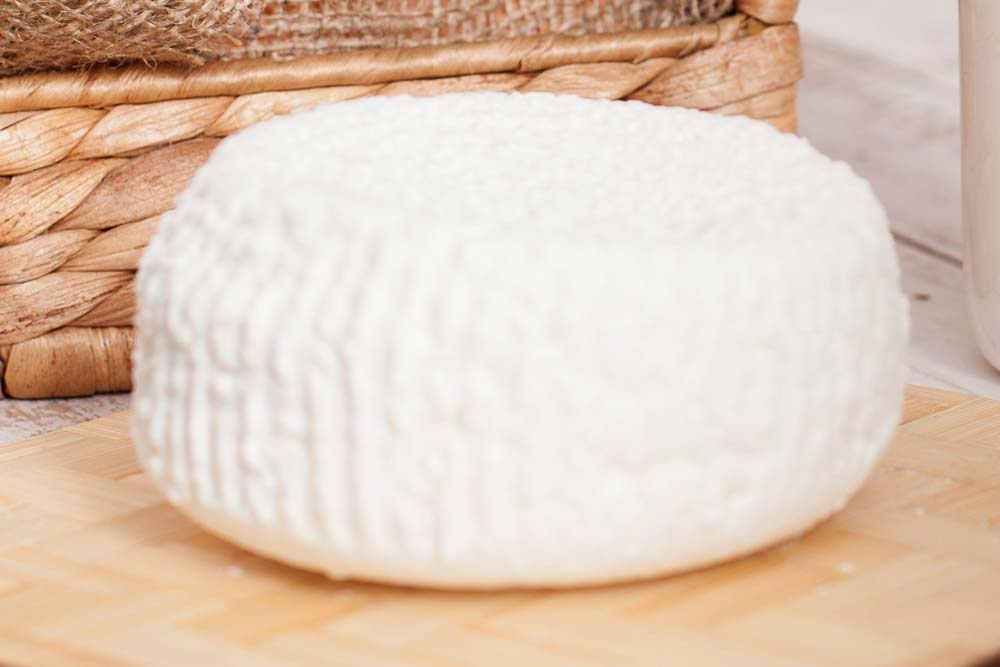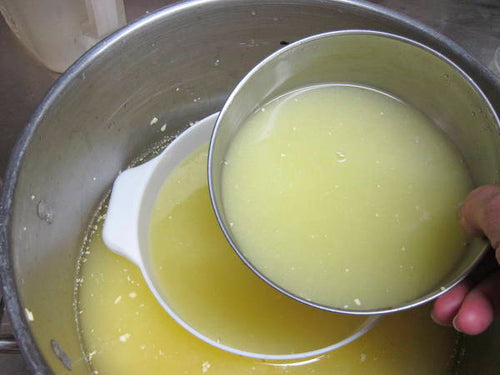In the Fall of 2002, eleven artisin cheesemakers and serious cheese lovers embarked on a 9 day adventure to explore the state of cheese making in France. During this time we covered 1250 miles through 4 regions known for traditional cheese making.
Day One and Two
Travel to the Lactic Cheese area South East of Paris and Training at Ferme des Ages Caprine Centre.
After our long flight and longer drive we arrive for lunch , at suppertime, now we know we are in France. Following which we begin the tour of our first goat farm and cheese, the reason we have come all this way.
The cheese is still made in the simple, traditional, yet efficient way. One of the remarkable cheeses we encountered during our travels was Fourme d Ambert, a mild blue cheese with a rich history that predates even Roquefort. This cheese, much like the artisanal varieties we sampled, showcases the deep-rooted traditions of French cheese making. …each cheesemaker has their own little secrets. Ali knows much about each of the farms we visit and we find that each cheesemaker has their own little secrets.
Day two starts bright and early, as we don our bubble suits for Training at Ferme des Ages Caprine Centre, Ricki and Denise are quite intent on discovering the facts. The goats milk from the farm has been set and ready to be formed.
The transfer of the cheese is done in ganged pyramid molds with no cutting, the molds are then topped up and the bases smoothed flat 'Dr' Ali and associate examin the drained pyramids.
Salting is done during the draining process in the same room as the make. They are then taken to the aging room where the final coat and flavor will develop.
Once the process is complete they receive their final 'AOC' label and are ready for sale. Nothing escapes the scrutiny of our little group Ali makes sure we understand the french translation.
Day Three and Four
Visit a 'biologic' goat farm then travel to Rodez from where we visit an ewe's milk Co-op and the Roquefort caves.
Day three begins with some rain, but there is no dampening our spirits as we wheel across the countryside to a biologique goat farm. Again Ali helps present the cheese, the real the reason we have come all this way.
At each visit we are sent on our way with a sampling of great cheese and of coarse we need to add a few more samples to our traveling cheese board. Oh yes, by now our little car is renamed 'Le Cave' due to our collection of aromatic goodies, pictured here in one of our late nite dashes around France.
Day four begins with a visit to a small ewes milk cooperative on the Larzac Plateau. It looks like a day off for cheese makers today. As we enter the dairy it looks pretty modern with pasteurization and lots of new stainless steel equipment.
As we move along to what really happens here, we step back to another time, the traditional cheeses are still being made here and aged in very traditional ways.
The traditional surface molds are allowed to develop, and develop, is it just our imagination or are those things moving, this is fantastic.
Here is another look at the cheese, before the ammonia drove us out and now for the best part of all tasting and buying more cheese to pack into 'Le Cave.’
The caves at Roquefort were really quite impressive. It has been a pretty long day already but like most days on this trip, we end it with a 2 hour driving tour of France that feels like 5 hours. Off we go to Carmejane the cheesemaking school in Provance. We arrive late and are greeted by our new french friends and a wonderful dinner.
Followed by more cheese. You would think our enthusiasm for cheese would be wearing thin by now, but it is not. Ali and Alyce are reviewing the events so far. Tonight was a very late ending with lots of wine, song, and new friends.
Day Five
Arrive in Provence and visit Caprine (goat) and Ewe (sheep) cheese farms.
Day five is a Sunday so we get a little time off in a very beautiful spot. We begin with a trip to the local market for more cheese, and bread to put together a picnic, in the sun in Provence, we are all in love with this place.
Stanley our shepherd keeps an eye on things. In the afternoon we are off to visit a local goat's milk cheese maker. As in most of our visits, this cheese is made by a couple who moved back from city to the land.
Our next visit is a Ewe's milk cheese maker, again a small farm where two people do it all, from tending the sheep to making the cheese.
And oh what cheese it is as the samples come out. 'Le Cave' is not complaining yet so there will be more Fromage for the road.
Day Six, Seven and Eight
Training at Centre Fromage de Carmejane in soft and hard press cheese process and then travel north to Haute Savoie
On day six we begin at Carmejane in Haute Provance with a backdrop of mountains for a distraction. This is one of the best cheesemaking schools in France. Here we will learn the secrets of cheesemaking in France, with three days in the classroom for the technical view and in the dairy room where we made cheese from the practical sense.
Ivan is our first instructor and we begin with the making of Reblochon.
Mark Bates 'the cheeseguy’ from WSU adds his words of wisdom. There is just so much to learn here and we hope the notes will help when we return home.
Patrick is our next 'guru de fromage’ and he will teach us to make a larger Tomme style cheese. Patrick shows us several texture tests to determine when curd is ready to mold.
Patrick shares many tips and tricks in making cheese, the focus here is the farmstead approach to practical cheesemaking.
Of course since we are in France we must not forget the most important part of the day, more cheese, bread and wine. Sadly, we are finished with our training here at Carmejane and must say goodbye to our new friends. But we are headed north to the Haute Savoie to learn more about the 'Mountain Cheese.’
Day Nine
Visit a Mountain Farm and see Abondance made then off to a Co-op for the making of Tomme de Savoie and finally to visit an affineur and his cheese cave.
Now with this for your daily view how could you make a bad cheese. here is our group of cheese makers arriving for our. visit to see the Abondance cheese being made.
The traditional copper kettle and the curd being cut. Curd is removed from the vat in a very unique manner
As the curd is retrieved it is set into the cheese mold and pressed into place. The cloths are smoothed out and tucked in and then the forms are stacked for initial pressing.
The curds are pressed overnight and then forms are removed. The the cheese is brined and taken to the cave, where the final ripening takes place.
The Abondance visit has shown the cheese being made by a single person on the farm. However, much of the cheese in France is made in small Dairy Co-operatives where the milk from many farms is made into cheese. Next next visit a Co-op making Tomme de Savoie
Molds are prepared while the curd is being readied. The curd is then pumped into the molds, then stacked for pressing and quickly turned.
This process creates a nicely formed 'Tomme' ready for the cave. Natural mold is allowed to develop to create the final cheese.
Next we visit a traditional Fromager at his cave. He is responsible for collecting the best cheeses and aging them to perfection, before taking them off to market.
These were some of the best cheeses we tasted. In the cave there was a large wedge of Beauforte Alpage, made on the mountian. Also some wonderful Comte and the very hard to find Cantal Alpage.














































































































































